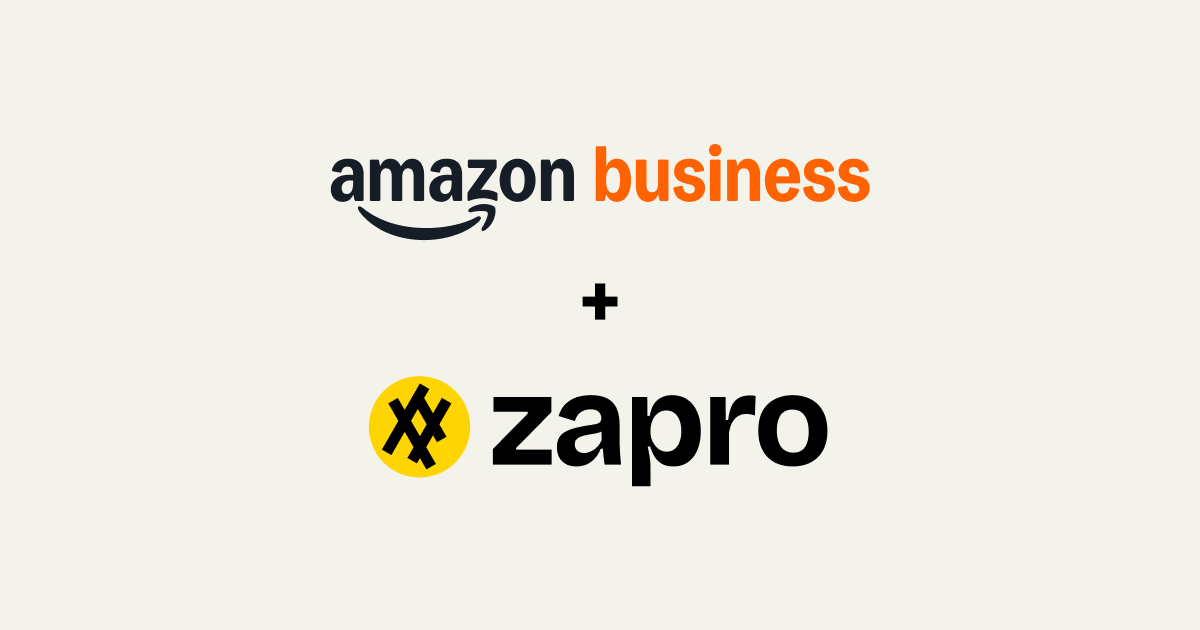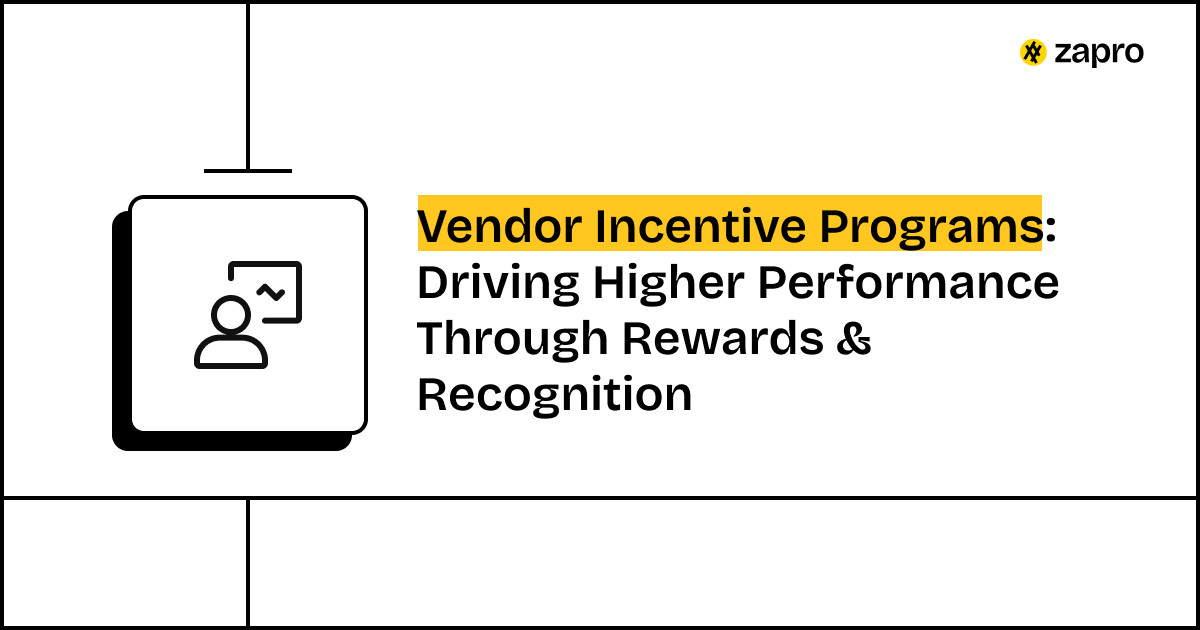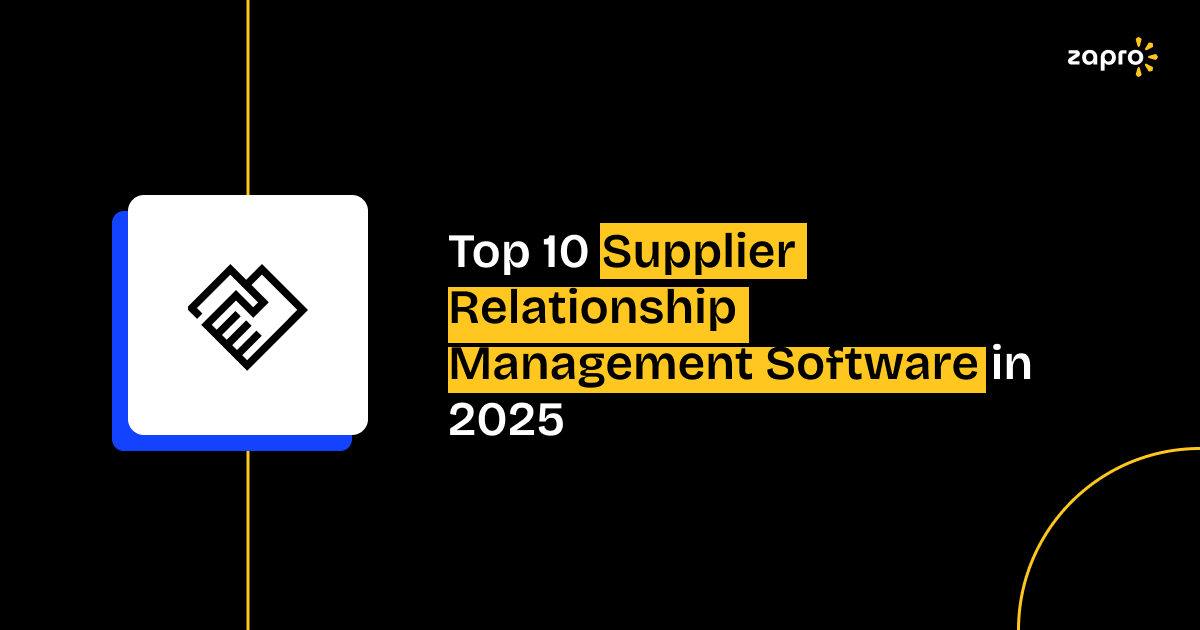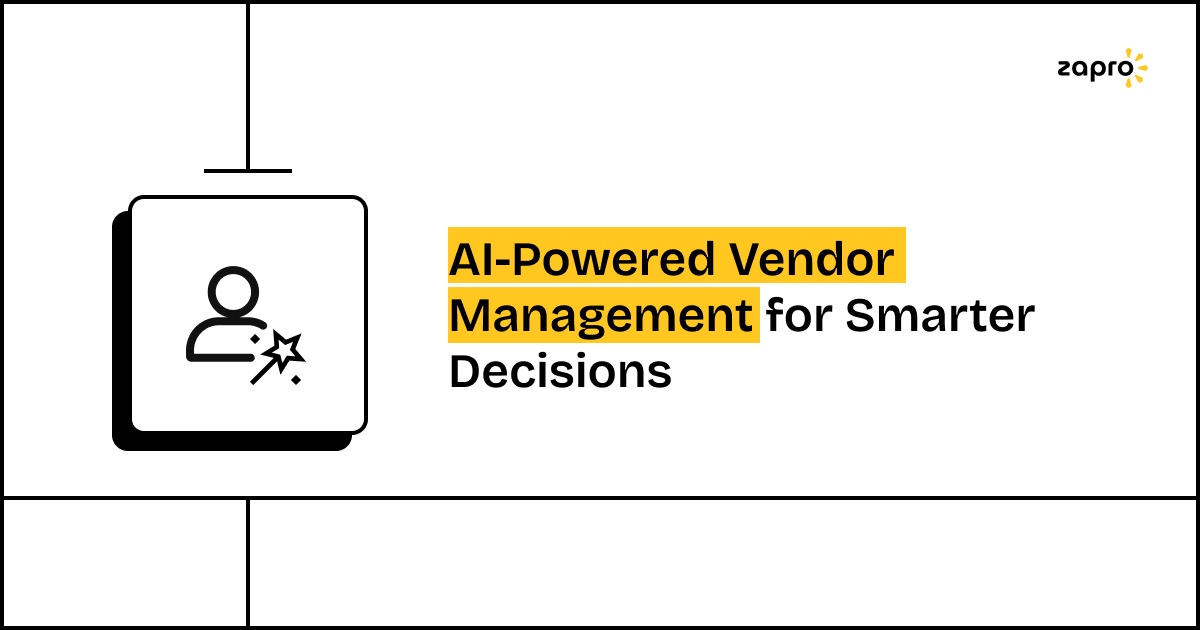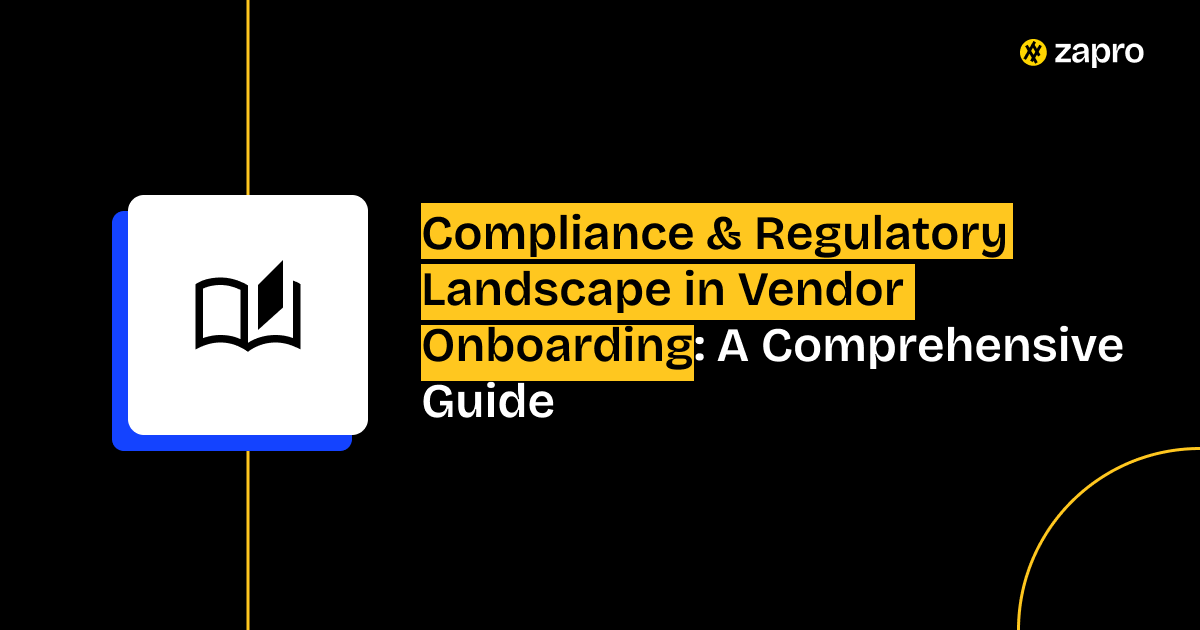Most procurement teams depend on the “stick” approach. Service level agreements (SLAs) and penalties function as enforcement tools to maintain supplier performance at or above minimum requirements. The approach protects against risks but restricts suppliers from achieving better results. Suppliers will restrict their delivery to the minimum requirements established in their contracts.
The implementation of vendor incentive programs known as “carrot” becomes necessary when organizations require suppliers to perform beyond their contractual obligations. Organizations need suppliers to innovate and deliver projects faster while actively seeking cost reduction opportunities.
The solution to achieve superior results from suppliers exists through vendor incentive programs which we call the “carrot.” Strategic reward systems enable organizations to build partnerships with suppliers which results in better quality delivery and extended relationships and substantial business advantages. This document demonstrates methods to create supplier motivation plans which produce meaningful results.
Introduction: The Power of Positive Reinforcement in VPM
The supplier receives an A- grade on the scorecard when they deliver 99% of their orders on time and 99.5% of their products meet quality standards while you need to pay the invoice amount. The supplier faces a penalty when they fail to deliver their orders on time at a rate of 95%. The system lacks any incentive which would drive the supplier to achieve 100% OTD and generate innovative feature suggestions.
Shifting from ‘Stick’ to ‘Carrot’: Why Incentives Matter
The supplier will maintain a defensive posture when they only receive penalties. The supplier dedicates their efforts to reduce potential risks while staying away from financial penalties. A well-designed vendor incentive program shifts this mindset entirely. It moves the conversation from what happens if you fail to what we can achieve together. This positive reinforcement strategy directly encourages:
- Discretionary Effort: Your account receives the top resources and innovative thinking and skilled personnel from suppliers because they understand their investment will generate measurable results.
- Innovation: The incentive structure enables them to dedicate resources to collaborative R&D projects which produce innovative solutions that benefit both organizations.
- Customer of Choice Status: Your company gains a competitive edge through market positioning because you receive priority service from suppliers during peak times and new service launches.

Only 22% of procurement organizations report using supplier scorecards with both operational and nonoperational metrics.
Types of Vendor Incentive Programs
Incentives should be tailored to the supplier’s role and the strategic goal you are trying to achieve. They fall into four primary categories.
Financial Incentives (e.g., performance bonuses, early payment discounts)
Financial rewards serve as the simplest and most obvious method for suppliers to receive recognition and rewards. They are crucial for transactional suppliers where performance is easy to quantify.
- Performance Bonuses: The program awards a fixed amount or percentage based on the vendor’s success in reaching their established performance targets. The vendor performance bonus program rewards vendors who maintain 100% inventory accuracy throughout four consecutive quarters and finish projects before schedule.
- Early Payment Discounts: The 2/10 Net 30 payment term allows vendors to receive a 2% discount when they pay their invoice within 10 days which provides better value than year-end bonuses to most small business partners.
- Shared Savings: The program gives suppliers financial benefits based on their cost savings achievements when they reach strategic partnership targets through value engineering and process optimization work.
Non-Financial Incentives (e.g., preferred supplier status, longer contracts)
These rewards cost your organization little in cash but offer incredible strategic value and security to the vendor’s business.
- Preferred Supplier Status: Once achieved, this status grants the vendor the “first look” or automatic consideration for new projects without any delay going through a full re-tendering process. This reduces their sales costs significantly.
- Longer Contract Terms: The vendor receives business stability through extended one-year contracts which become three or five-year agreements that enable them to invest in capacity development for mutual benefit.
- Exclusivity: The vendor gains access to work with particular categories or regions after reaching exceptional performance targets.
Recognition Programs (e.g., ‘Supplier of the Year’ awards, public acknowledgment)
Recognition serves to fulfill human requirements for recognition and reputation development. The approach proves successful for building stronger vendor relationships.
- ‘Supplier of the Year’ Awards: The ‘Supplier of the Year’ Awards serve as a recognition program for vendors who achieve exceptional results.
- Joint Case Studies: The organization works together to create a public document which showcases their successful work on a significant business project. The vendor achieves status as an innovative business partner through this partnership.
- Executive Endorsements: Your organization’s C-suite executives endorse the vendor through formal statements which highlight their exceptional performance.
Growth Opportunities (e.g., expanded scope, involvement in new projects)
The vendor incentives directly support their business expansion targets and market leadership ambitions.
- Expanded Scope of Work: The vendor receives additional work responsibilities through expanded scope of work as a reward for maintaining high performance levels.
- Involvement in New Projects: The vendor receives access to new projects after demonstrating their exceptional performance through consultation on R&D initiatives and unannounced technology pilots. The vendor achieves strategic partner status through this arrangement.
Learn about vendor management software.
Designing an Effective Incentive Program: Key Considerations
The development of an incentive program requires careful planning to achieve fairness and transparency while supporting the procurement business strategy. A program with poor design will generate more negative feelings than any penalty system.
Clear, Measurable Goals Tied to Business Objectives
Every incentive program needs to connect its objectives to specific business targets which advance organizational progress.
- Avoid: Rewarding “good communication.”
- Reward: Rewarding a vendor performance bonus for reducing raw material wastage by 10%, which directly improves your company’s profitability objective. The program should reward suppliers for achieving a 20% improvement in Mean Time to Recovery (MTTR) because this enhancement will boost your Customer Satisfaction (CSAT) score.
Fair and Transparent Criteria (Based on KPIs, Scorecards)
The suppliers will lose trust in the program when the rules remain unclear. The reward system must use vendor performance metrics and yearly tracked KPIs to establish 100% objective criteria for earning rewards.
- Transparency: The reward tiers along with calculation methods should be openly displayed on a shared platform. The vendor should be able to track their progress toward the reward without any delay.
- Objectivity: Criteria should only be based on quantifiable data from scorecards, not subjective feelings from the account manager.
Attainable but Challenging Targets
The target should require extra effort but should not feel like an impossible stretch goal. If the targets are too easy, you’re just paying for baseline performance. If they are too hard, suppliers will give up early in the year. The ideal target is something that requires collaboration and ingenuity to achieve.
Timely and Consistent Reward Delivery
If a vendor earns a bonus in Q1, they should receive the payment or the acknowledgment by the end of Q2. The supplier faces financial risks because delayed rewards reduce their motivational power. The reward system requires uniform treatment of all suppliers who reach the same performance targets.
Alignment with Supplier’s Business Strategy
You need to identify what drives your vendor to achieve success. A vendor performance bonus linked to revenue appeals to large publicly traded companies but small innovative startups prefer non-monetary rewards that include extended contracts and collaborative innovation initiatives for securing future funding. The reward system needs to deliver value to their operations.
The Smarter Way to Incentivize Supplier Performance

Implementing and Communicating Your Program
A brilliant program design is useless without proper implementation and communication.
Gaining Internal Buy-in and Budget Approval
This is where procurement must demonstrate the vendor ROI. You need to convince finance and leadership that the rewards budget is not an expense, but an investment. Present a clear “If/Then” projection: If we allocate 2% of spend to bonuses for OTD improvement, we can expect a 5% reduction in carrying costs due to fewer expedited fees and less buffer stock. This positions the program as a cost avoidance strategy.
Communicating the Program Clearly to Vendors
The incentive program must be introduced by executive leadership during a strategic supplier meeting, positioning it as a strategic alliance to achieve mutual goals. Don’t bury it in an addendum. Clearly share the “why” behind the reward—linking their achievement to your ultimate business objectives (e.g., “Your quality score bonus directly supports our goal of achieving a 10-point rise in Customer NPS”).
Integrating into Contracts and Review Cycles
The incentive structure should be formally integrated into the contract’s “Schedule B: Performance and Rewards.” Every vendor quarterly business review (QBR) should include a dedicated agenda item tracking the vendor’s current standing on their incentive goals, alongside their VPM scorecard.
Measuring the ROI of Vendor Incentive Programs
To maintain the budget and justify the investment, you must quantify the impact of your vendor incentive programs.
Quantifying the Impact on Quality, Cost, Delivery, and Innovation
The true ROI isn’t just the delta between the bonus paid and the savings achieved; it’s the holistic impact on the business.
| Strategic Metric | Measurement Before/After Incentive Program | Vendor ROI Calculation |
| Delivery | Reduction in Expedited Shipping Fees | Total Fees Saved > Total Bonuses Paid |
| Quality | Reduction in Warranty Claims and Rework Costs | Cost Avoidance from Rework |
| Innovation | Number of Adopted, Vendor-Sourced Improvement Ideas | Revenue Generated by Innovation / Cost of Bonus |
| Cost | Reduction in Total Cost of Ownership (TCO) | Savings Shared with Vendor vs. Savings Retained |
Tracking Supplier Engagement and Satisfaction
The soft metrics offer valuable information about partnership health through their measurement:
- Supplier Satisfaction Scores (SSAT): The process involves asking vendors to evaluate their experience and their level of commitment to your organization.
- Participation Rate: The system tracks all vendors who join the vendor incentive programs from their eligible pool.
- Relationship Tier Movement: The system tracks which suppliers advance to more strategic relationship tiers after joining the program.
Potential Pitfalls and How to Avoid Them
Vendor incentive programs will not succeed even when vendors have good intentions because they contain specific pitfalls.
- Unclear Criteria: The use of complex calculation methods which allow different interpretations creates vendor dissatisfaction and decreases their trust in the program. The solution involves using basic automated metrics which use simple binary responses such as “Did you achieve 99% OTD? Yes/No”.
- Insufficient Rewards: The vendor performance bonus needs to be substantial enough to motivate vendors to put in effort because small rewards will get ignored. The reward amount should match the projected profit margin growth that suppliers can achieve. The reward needs to have substantial value.
- Perceived Unfairness: The program creates negative feelings among small vendors because it provides better benefits to major suppliers while disregarding their valuable work. The program should include separate reward programs which provide equal value to all vendors regardless of their size.
How Zapro.ai Supports Incentive Program Management
Manually tracking complex vendor performance bonuses and supplier rewards and recognition tiers across many facets of suppliers is painstakingly time consuming and prone to error. Zapro.ai simplifies this by providing the automated, centralized structure needed for transparent VPM.
Zapro.ai’s platform can track all relevant vendor performance metrics and KPIs and scorecard data objectively, providing the clean data foundation for transparent incentive programs. Its reporting features allow organizations to monitor supplier performance against incentive thresholds in real time and demonstrate the vendor ROI of their programs. This automated tracking facilitates fair and consistent reward distribution, turning the incentive program into a streamlined, effective operation.
Conclusion: Cultivating a High-Performing Supplier Ecosystem
Vendor incentive programs represent the ultimate transformation of procurement into a strategic value driver from its traditional role as a cost center. The “carrot” approach enables you to move past basic compliance requirements.
Your role now involves developing an optimized supplier network which focuses on ongoing development and mutual success instead of contract administration. Your organization achieves enduring strategic benefits through supplier reward programs which establish strong innovative relationships with vendors.
Are there any specific supplier KPIs—like quality or innovation—you’d like to map to a financial bonus structure?

Reward Excellence. Drive Performance. Build Loyalty.
Zapro automates vendor incentive programs, tracks performance, and rewards top suppliers—turning good partnerships into great ones.
Don’t miss our weekly updates
We’ll email you 1-3 times per week—and never share your information.

 Healthcare
Healthcare Financial Services
Financial Services Technology
Technology Venture Capitalist
Venture Capitalist Chief Procurement Officer
Chief Procurement Officer Chief Financial Officer
Chief Financial Officer